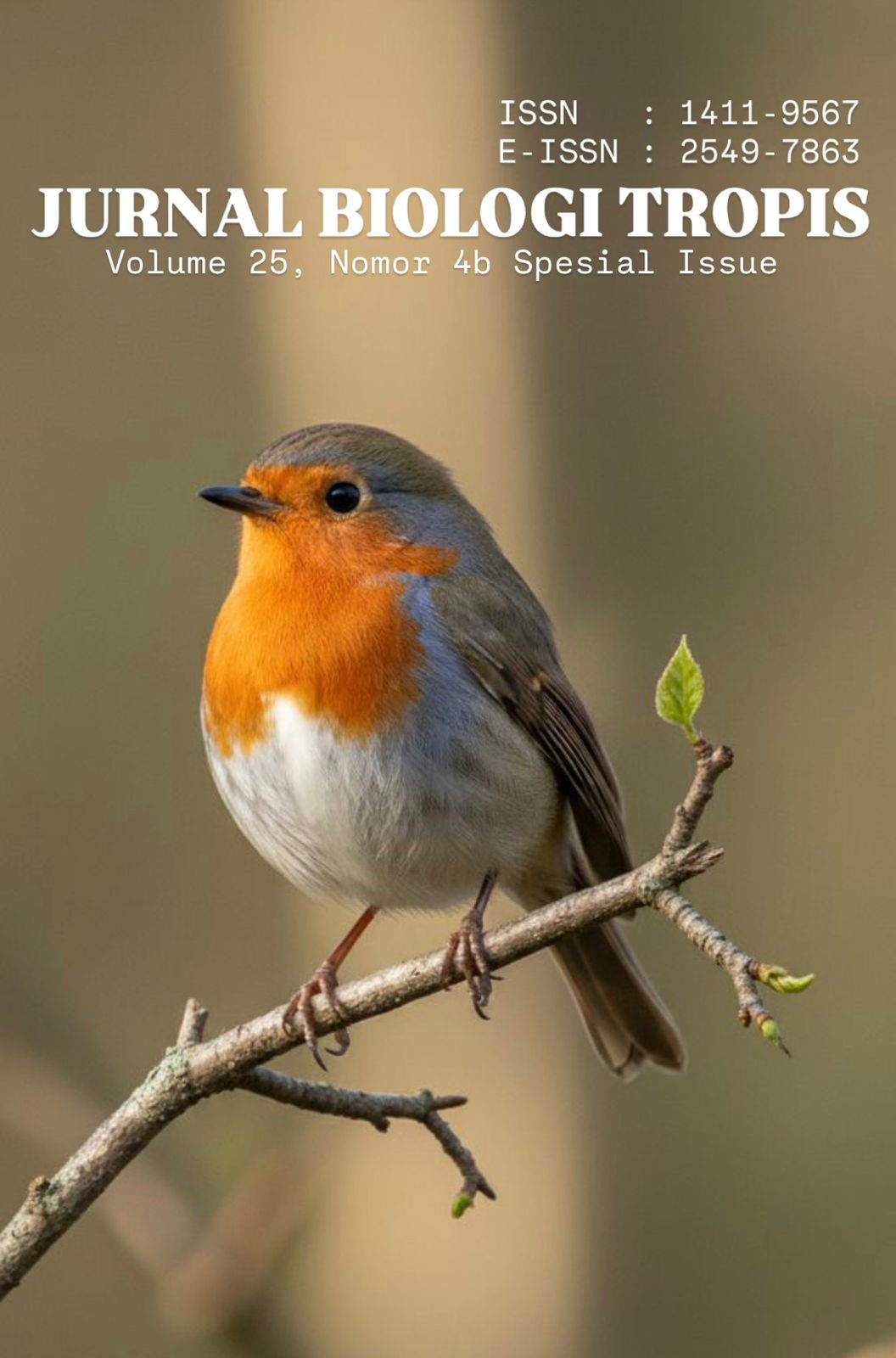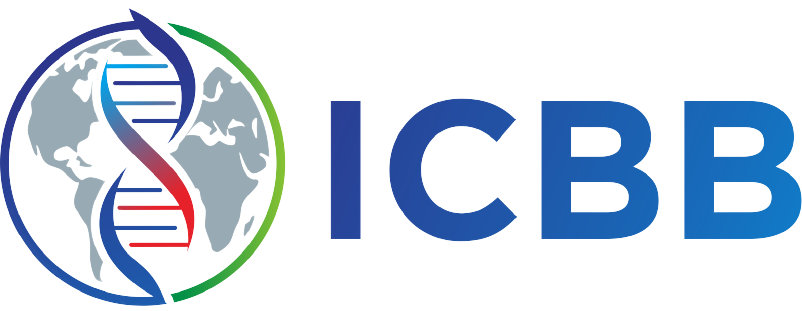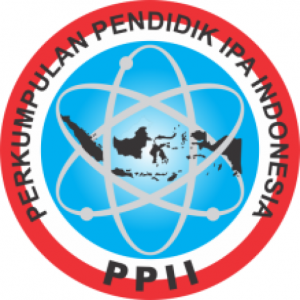Hidden Impact: Toxic Dinoflagellates Threaten the Sustainability of Pearl Cultivation in Sekotong, West Lombok, Indonesia
Authors
Abd. Saddam Mujib , Awan DermawanDOI:
10.29303/jbt.v25i4b.10397Published:
2025-11-02Issue:
Vol. 25 No. 4b (2025): Special IssueKeywords:
Dinoflagellate, Harmfull species, Impact, Toxin, Pearl cultivationArticles
Downloads
How to Cite
Downloads
Metrics
Abstract
The Sekotong waters, which serve as a pearl aquaculture center, heavily rely on good water quality but face unseen threats that could jeopardize the sustainability of the pearl farming. This study aims to examine the presence and distribution of five major dinoflagellate genera Dinophysis, Gymnodinium, Prorocentrum, Ceratium, and Protoperidinium in the waters of Sekotong, West Lombok, which is both a conservation area and a center for pearl aquaculture. This research is crucial given the potential impacts of harmful dinoflagellates on marine ecosystems and the sustainability of pearl production. Sampling was conducted at four stations, revealing variations in dinoflagellate abundance. Station 1 was dominated by Protoperidinium (approximately 15%), followed by Gymnodinium (around 11%) and Dinophysis (about 15%). At Station 2, only Prorocentrum was observed with an abundance of around 24%, whereas Station 3 was mainly inhabited by Ceratium (15%) and Gymnodinium (13%). Station 4 was characterized solely by Ceratium with a low abundance of approximately 4%. Oceanographic conditions such as temperature, salinity, nutrient levels, and current patterns are believed to influence the distribution and abundance of these dinoflagellates, supporting various ecological strategies including photosynthesis, mixotrophy, and heterotrophy. The presence of toxin-producing genera like Dinophysis and Gymnodinium poses a risk of harmful algal blooms (HABs), which can adversely affect the ecosystem and pearl farming activities. Therefore, the findings emphasize the importance of continuous monitoring and effective management to prevent the negative impacts of these harmful dinoflagellates. This study provides a strong scientific basis to support conservation efforts and enhance the sustainability of pearl aquaculture in Sekotong, a region with significant ecological and economic value.
References
Aissaoui, A., Armi, Z., Akrout, F., & Ben Hassine, O. K. (2014). Environmental Factors and Seasonal Dynamics of Prorocentrum lima Population in Coastal Waters of the Gulf of Tunis, South Mediterranean . Water Environment Research, 86(12), 2256–2270. https://doi.org/10.2175/106143014x13975035526266
Almansoori, H. A. (2024). Investigating The Mass Mortality Induced Factors Of Pearl Oyster(PINCTADA RADIATA) at Abu Dhabi Pearls Farm, UAE. United Arab Emirates University.
Anderson, D. M., Cembella, A. D., & Hallegraeff, G. M. (2012). Progress in understanding harmful algal blooms: Paradigm shifts and new technologies for research, monitoring, and management. Annual Review of Marine Science, 4, 143–176. https://doi.org/10.1146/annurev-marine-120308-081121
Anderson, D. M., Fensin, E., Gobler, C. J., Hoeglund, A. E., Hubbard, K. A., Kulis, D. M., Landsberg, J. H., Lefebvre, K. A., Provoost, P., Richlen, M. L., Smith, J. L., Solow, A. R., & Trainer, V. L. (2021). Marine harmful algal blooms (HABs) in the United States: History, current status and future trends. Harmful Algae, 102(March), 101975. https://doi.org/10.1016/j.hal.2021.101975
Baek, S. H., Shimode, S., Han, M. S., & Kikuchi, T. (2008). Growth of dinoflagellates, Ceratium furca and Ceratium fusus in Sagami Bay, Japan: The role of nutrients. Harmful Algae, 7(6), 729–739. https://doi.org/10.1016/j.hal.2008.02.007
Band-Schmidt, C. J., Bustillos-Guzmán, J. J., López-Cortés, D. J., Gárate-Lizárraga, I., Núñez-Vázquez, E. J., & Hernández-Sandoval, F. E. (2010). Ecological and physiological studies of Gymnodinium catenatum in the Mexican Pacific: A review. Marine Drugs, 8(6), 1935–1961. https://doi.org/10.3390/md8061935
Castrec, J., Fabioux, C., Le Goïc, N., Boulais, M., Soudant, P., & Hégaret, H. (2021). The toxic dinoflagellate Alexandrium minutum affects oyster gamete health and fertilization potential. Marine Environmental Research, 169(June). https://doi.org/10.1016/j.marenvres.2021.105401
Cho, K., Heo, J., Han, J., Hong, H. D., Jeon, H., Hwang, H. J., Hong, C. Y., Kim, D., Han, J. W., & Baek, K. (2020). Industrial applications of dinoflagellate phycotoxins based on their modes of action: A review. Toxins, 12(12), 1–17. https://doi.org/10.3390/TOXINS12120805
Díaz, P. A., Reguera, B., Moita, T., Bravo, I., Ruiz-Villarreal, M., & Fraga, S. (2019). Mesoscale dynamics and niche segregation of two Dinophysis species in Galician-Portuguese coastal waters. Toxins, 11(1). https://doi.org/10.3390/toxins11010037
Emma, L. (2024). Exploring harmful algal dynamics and oyster aquaculture in Nasketucket Bay , Massachusetts : insights , interplay , and management strategies : a thesis in Marine Science and Technology . University of Massachusetts Dartmouth.
Fathurrahman, & Aunurohim. (2014). Kajian Komposisi Fitoplankton dan Hubungannya dengan Lokasi Budidaya Kerang Mutiara (Pinctada Maxima) di Perairan Sekotong, Nusa Tenggara Barat. Teknik Pomits, 3(2), 93–98.
Fernández, R., Mamán, L., Jaén, D., Fuentes, L. F., Ocaña, M. A., & Gordillo, M. M. (2019). Dinophysis species and diarrhetic shellfish toxins: 20 years of monitoring program in andalusia, south of spain. Toxins, 11(4). https://doi.org/10.3390/toxins11040189
Funaki, C., Kuwata, K., Lum, W. M., Takahashi, K., Iwataki, M., & Takahashi, K. (2024). Effects of temperature and light intensity on growth in Prorocentrum cf . balticum ( Dinophyceae ) isolated from the Oyashio-Kuroshio Mixed Water region , North Pacific. Plankton and Benthos Research, 19(4), 191–202. https://doi.org/10.3800/pbr.19.191
García-Moreiras, I., Oliveira, A., Santos, A. I., Oliveira, P. B., & Amorim, A. (2021). Environmental Factors Affecting Spatial Dinoflagellate Cyst Distribution in Surface Sediments Off Aveiro-Figueira da Foz (Atlantic Iberian Margin). Frontiers in Marine Science, 8(August), 1–21. https://doi.org/10.3389/fmars.2021.699483
Golubkov, M., Nikulina, V., & Golubkov, S. (2019). Effects of environmental variables on midsummer dinoflagellate community in the Neva Estuary (Baltic Sea). Oceanologia, 61(2), 197–207. https://doi.org/10.1016/j.oceano.2018.09.001
Hallegraeff, G. M. (1992). Harmful algal blooms in the Australian region. Marine Pollution Bulletin, 25(5–8), 186–190. https://doi.org/10.1016/0025-326X(92)90223-S
Hasani, Q., Yusup, M. W., Caesario, R., Julian, D., & Muhtadi, A. (2022). Autoecology of Ceratium furca and Chaetoceros didymus as potential harmful algal blooms in tourism and aquaculture sites at Teluk Pandan Bay, Lampung, Indonesia. Biodiversitas, 23(11), 5670–5680. https://doi.org/10.13057/biodiv/d231117
Heil, C. A., Glibert, P. M., Al-sarawi, M. A., Faraj, M., Behbehani, M., & Husain, M. (2001). First Record of a Fish-Killing Gymnodinium Sp Bloom in Kuwait Bay. Marine Ecology Progress Series, 214, 15–23.
Herawati, E. Y., Valina, R., Dini, C. A. F., Cahyani, V., Khasanah, R. I., Wiratno, E. N., & Samuel, P. D. (2023). Abundance and composition analysis of dinoflagellates in Mayangan and Binor Coastal Area, Probolinggo, East Java, Indonesia. IOP Conference Series: Earth and Environmental Science, 1191(1). https://doi.org/10.1088/1755-1315/1191/1/012001
Hernández-Becerril, D. U., Pichardo-Velarde, J. G., Alonso-Rodríguez, R., Maciel-Baltazar, E., Morquecho, L., Esqueda-Lara, K., Barón-Campis, S. A., & Quiroz-González, N. (2023). Diversity and distribution of species of the planktonic dinoflagellate genus Alexandrium (Dinophyta) from the tropical and subtropical Mexican Pacific Ocean. Botanica Marina, 66(6), 539–557. https://doi.org/10.1515/bot-2023-0037
Ignatiades, L., & Gotsis-Skretas, O. (2010). A review on toxic and harmful algae in Greek coastal waters (E. Mediterranean Sea). Toxins, 2(5), 1019–1037. https://doi.org/10.3390/toxins2051019
Jeong, H. J., du Yoo, Y., Kim, J. S., Seong, K. A., Kang, N. S., & Kim, T. H. (2010). Growth, feeding and ecological roles of the mixotrophic and heterotrophic dinoflagellates in marine planktonic food webs. Ocean Science Journal, 45(2), 65–91. https://doi.org/10.1007/s12601-010-0007-2
Kalvelage, J., & Rabus, R. (2024). Multifaceted Dinoflagellates and the Marine Model Prorocentrum cordatum. Microbial Physiology, 34(1), 197–242. https://doi.org/10.1159/000540520
Matsuyama, Y. (2012). Impacts of the harmful dinoflagellate Heterocapsa circularisquama bloom on shellfish aquaculture in Japan and some experimental studies on invertebrates. Harmful Algae, 14, 144–155. https://doi.org/10.1016/j.hal.2011.10.019
Mujib, A. S., Damar, A., & Wardiatno, Y. (2015). Spatial Distribution of Planktonic Dinoflagellate in Makassar Waters, South Sulawesi. Jurnal Ilmu Dan Teknologi Kelautan Tropis, 7, 479–492. https://doi.org/10.29244/jitkt.v7i2.11033
Narale, D. D., & Anil, A. C. (2017). Spatial distribution of dinoflagellates from the tropical coastal waters of the South Andaman, India: Implications for coastal pollution monitoring. Marine Pollution Bulletin, 115(1–2), 498–506. https://doi.org/10.1016/j.marpolbul.2016.11.035
Oikawa, H., Watanabe, R., Matsushima, R., & Suzuki, T. (2018). Large-scale Cultivation of Gymnodinium Catenatum for Paralytic Shellfish Poisoning Toxin Standards. Food Safety, 6(2), 83–87. https://doi.org/10.14252/foodsafetyfscj.2017027
Phan, L. T., Krakhmalnyi, M., Le, H. T. T., Tran, V. T. Le, Tran, H. T. M., Ngoc Huynh, D. T., Zarei Darki, B., & Krakhmalnyi, A. (2024). A new species and a new combination in Protoperidinium sect. Oceanica (Peridiniales, Dinophyceae) from Vietnamese waters. Nordic Journal of Botany, 2024(5), 1–9. https://doi.org/10.1111/njb.04206
Reguera, B., García-Portela, M., Velasco-Senovilla, E., Rial, P., Escalera, L., Díaz, P. A., & Rodríguez, F. (2024). Dinophysis, a highly specialized mixoplanktonic protist. Frontiers in Protistology, 1(January), 1–9. https://doi.org/10.3389/frpro.2023.1328026
Riccardi, M., Guerrini, F., Roncarati, F., Milandri, A., Cangini, M., Pigozzi, S., Riccardi, E., Ceredi, A., Ciminiello, P., Dell’Aversano, C., Fattorusso, E., Forino, M., Tartaglione, L., & Pistocchi, R. (2009). Gonyaulax spinifera from the Adriatic sea: Toxin production and phylogenetic analysis. Harmful Algae, 8(2), 279–290. https://doi.org/10.1016/j.hal.2008.06.008
Rojas-Castillo, O. A., Pereira, L., Buffon, P., & de Souza Cardoso, L. (2023). Drivers and ecology of Ceratium furcoides invasion of a Brazilian subtropical reservoir and its interaction with the phytoplankton community. Limnologica, 101, 126080. https://doi.org/10.1016/j.limno.2023.126080
Sathishkumar, R. S., Sahu, G., Mohanty, A. K., Arunachalam, K. D., & Venkatesan, R. (2021). First report of Protoperidinium steinii (Dinophyceae) bloom from the coastal marine ecosystem – an observation from tropical Indian waters. Oceanologia, 63(3), 391–402. https://doi.org/10.1016/j.oceano.2021.04.003
Siano, R., & Montresor, M. (2005). Morphology, ultrastructure and feeding behaviour of Protoperidinium vorax sp. nov. (Dinophyceae, Peridiniales). European Journal of Phycology, 40(2), 221–232. https://doi.org/10.1080/09670260500128293
Tampo, L., Kaboré, I., Alfa-Sika Mande, S.-L., & Moctar Bawa, L. (2024). Water Quality and Aquatic Ecosystem Assessment Using Water Quality Indices in West Africa: Challenge and Perspectives. In Water Quality - New Perspectives (pp. 1–27). https://doi.org/10.5772/intechopen.109137
Tango, P. J., Magnien, R., Butler, W., Luckett, C., Luckenbach, M., Lacouture, R., & Poukish, C. (2005). Impacts and potential effects due to Prorocentrum minimum blooms in Chesapeake Bay. Harmful Algae, 4(3), 525–531. https://doi.org/10.1016/j.hal.2004.08.014
Telesh, I., Schubert, H., & Skarlato, S. (2024). Wide ecological niches ensure frequent harmful dinoflagellate blooms. Heliyon, 10(4), e26495. https://doi.org/10.1016/j.heliyon.2024.e26495
Tillmann, U., Wietkamp, S., Gottschling, M., & Hoppenrath, M. (2023). Prorocentrum pervagatum sp. nov. (Prorocentrales, Dinophyceae): A new, small, planktonic species with a global distribution. Phycological Research, 71(1), 56–71. https://doi.org/10.1111/pre.12502
Tunin-Ley, A., Ibañez, F., Labat, J. P., Zingone, A., & Lemée, R. (2009). Phytoplankton biodiversity and NW Mediterranean Sea warming: Changes in the dinoflagellate genus Ceratium in the 20th century. Marine Ecology Progress Series, 375, 85–99. https://doi.org/10.3354/meps07730
Wells, M. L., Trainer, V. L., Smayda, T. J., Karlson, B. S. O., Trick, C. G., Kudela, R. M., Ishikawa, A., Bernard, S., Wulff, A., Anderson, D. M., & Cochlan, W. P. (2015). Past and Present To Forecast the Future. Harmful Algae, 1(49), 68–93. https://doi.org/10.1016/j.hal.2015.07.009.Harmful
License
Copyright (c) 2025 Abd. Saddam Mujib, Awan Dermawan

This work is licensed under a Creative Commons Attribution 4.0 International License.

Jurnal Biologi Tropis is licensed under a Creative Commons Attribution 4.0 International License.
The copyright of the received article shall be assigned to the author as the owner of the paper. The intended copyright includes the right to publish the article in various forms (including reprints). The journal maintains the publishing rights to the published articles.
Authors are permitted to disseminate published articles by sharing the link/DOI of the article at the journal. Authors are allowed to use their articles for any legal purposes deemed necessary without written permission from the journal with an acknowledgment of initial publication to this journal.


























